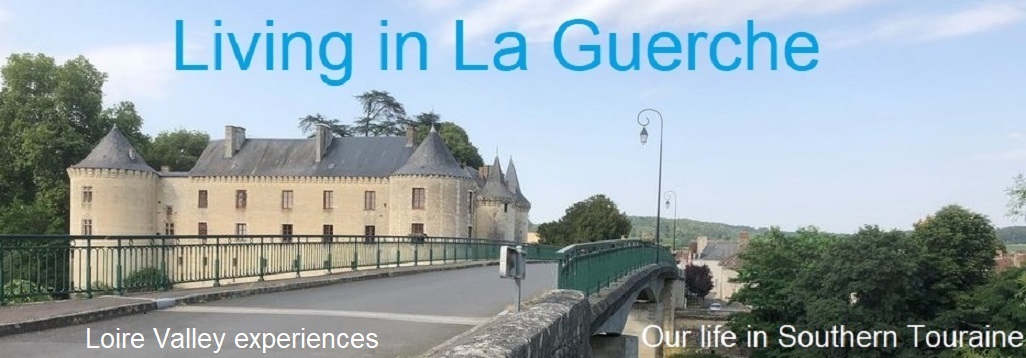In the small village
of Fontgombault
We had deliberately gone at this time to witness the vespers service- the evening mass accompanied by the monks chanting. To begin with I found this a very moving experience but the longer it went on with all the sitting down, standing up motions of the monks, for me it took on a rather 'Monty Pythonesque' feel... I can see the pearly gates closing in front of me as I write this!
Good video here (though sound quality not great) of the mass.
I have never really understood the benefits of monastic life - devoting your life to god is admirable but surely these 'good' people could better serve the world in a more practical way while still praying - or am I underestimating the power of their devotion?
They do do practical things to sustain their livelihood with the working of their agricultural land and their pottery,which they offer for sale to visitors via their craft shop- but I am not sure what other ways they are contributing to society at large other than their prayers. .
The abbey has an interesting history with its origins dating from 1091 when hermits living in nearby caves decided to build the first abbey church. The abbey flourished during the 12th and 13th centuries and by the 15th was well established. It was during this time that the monks started to create the fish farming ponds that now form a large part of the Brenne national park. The abbey was plundered by Calvinists during the 16th century and wasn't restored until the end of the following century.
Like many religious buildings during the French Revolution, the abbey was
partly demolished before being sold as 'national property'.It was eventually brought back into monastic use after being bought by Trappist monks in 1849,thus saving it from any further destruction and commencing its renovation,which included establishing a small distillery.Unfortunately after 50 years of restoration by the Trappist monks it was abandoned by them when external forces meant the monks had to leave for other monasteries in France.
In 1905 it was bought by a Parisian lawyer Louis Bonjean who converted it into,of all things,a button factory plus ran a newspaper and school from the complex of buildings.
During the first World War it was used as a military hospital and then after as a seminary up until 1948.In the same year it returned to its original use as Benedictine Abbey with the
installation of 22 monks from the Abbey of Solesmes. After a great deal of restoration over the years the abbey continued to prosper with its numbers peaking at 70 monks in 2014.Currently there are 60 monks in residence with 10 of them being despatched to bolster numbers at another French monastery.













No comments:
Post a Comment